B. Hasselblatt, A. Katok0444826696, 9780444826695, 9780080533445
These volumes give a comprehensive survey of dynamics written by specialists in the various subfields of dynamical systems. The presentation attains coherence through a major introductory survey by the editors that organizes the entire subject, and by ample cross-references between individual surveys.
The volumes are a valuable resource for dynamicists seeking to acquaint themselves with other specialties in the field, and to mathematicians active in other branches of mathematics who wish to learn about contemporary ideas and results dynamics. Assuming only general mathematical knowledge the surveys lead the reader towards the current state of research in dynamics.
Volume 1B will appear 2005.
Table of contents :
Cover……Page 1
Date-line……Page 2
Preface……Page 3
List of Contributors……Page 5
Contents of Volume……Page 7
1. Principal structures (B. Hasselblatt and A. Katok)……Page 9
1.1. Purpose and structure……Page 11
1.2. The basic objects of dynamics……Page 12
1.3. Equivalence and functorial constructions……Page 15
1.4. Asymptotic behavior and averaging……Page 21
2.1. Setting and examples……Page 24
2.2. Basic concepts and constructions……Page 26
2.3. Recurrence……Page 31
2.4. Relative behavior of orbits……Page 36
2.5. Orbit growth properties……Page 39
2.6. Symbolic dynamical systems……Page 48
2.7. Low-dimensional topological dynamical systems……Page 55
3.1. Introduction……Page 57
3.2. Measure spaces, maps, and Lebesgue spaces……Page 60
3.3. Setting and examples……Page 64
3.4. Basic concepts and constructions……Page 66
3.5. Ergodic theorems……Page 73
3.6. Quantitative recurrence and principal spectral properties……Page 75
3.7. Entropy……Page 82
4.1. Introduction……Page 90
4.2. Existence of invariant measures……Page 91
4.3. Unique ergodicity……Page 95
4.4. Metric and topological entropy……Page 99
5.1. Differentiable dynamics……Page 104
5.2. Basic concepts and constructions……Page 111
5.3. Hamiltonian dynamics……Page 121
5.4. Lagrangian systems……Page 126
5.5. Contact systems……Page 128
5.6. Variational methods in dynamics……Page 131
5.7. Holomorphic dynamics……Page 133
6.1. Introduction……Page 135
6.2. Main features of hyperbolic behavior……Page 136
6.3. Stable manifolds……Page 138
6.4. Definitions……Page 139
6.5. Examples……Page 141
6.6. The core theory……Page 145
6.7. Developments of the theory……Page 150
6.8. The theory of nonuniformly hyperbolic systems……Page 154
6.9. Partial hyperbolicity……Page 157
7.1. Introduction……Page 159
7.2. The setting for elliptic dynamics……Page 163
7.3. Diophantine phenomena with a single frequency……Page 170
7.4. Diophantine phenomena with several frequencies……Page 176
7.5. Liouvillian phenomena……Page 179
8.1. Introduction……Page 183
8.2. Main features of parabolic behavior……Page 185
8.3. Parabolic systems with uniform structure……Page 188
8.4. Flows on surfaces……Page 190
8.5. Billiards in polygons and polyhedra and related systems……Page 196
References……Page 202
2. Entropy, isomorphism and equivalence in ergodic theory (J.-R Thouvenot)……Page 213
3. Joinings, isomorphisms and $bar{d}$-distance……Page 215
4. Basic entropy theory and the Pinsker algebra……Page 218
5. The Rokhlin lemma and its applications……Page 224
6. The Ornstein isomorphism theory……Page 227
7. Flows……Page 232
9. The finitary isomorphism theorem……Page 233
11. The structure theorems of Rudolph……Page 234
12. The K-non-Bernoulli zoo……Page 235
13. The equivalence theory……Page 236
14. Natural examples……Page 240
15. Actions of amenable groups……Page 242
References……Page 244
3. Hyperbolic dynamical systems (B. Hasselblatt)……Page 247
1.1. Historical sketch……Page 249
1.2. Hyperbolic dynamics……Page 252
1.3. Outline of this survey……Page 253
2.1. Detinitions and examples……Page 255
2.2. Stable manifolds……Page 263
2.3. Regularity of the invariant laminations……Page 269
3.1. Expansivity and local stability……Page 274
3.2. Shadowing……Page 275
3.3. Transitivity……Page 279
3.4. Periodic points……Page 281
3.5. Stability and classification……Page 283
3.6. Invariant measures……Page 289
3.7. Partial hyperbolicity……Page 292
4. Smooth conjugacy, moduli and rigidity……Page 294
4.1. Cohomology, Lifschitz theory, regularity……Page 295
4.2. Smooth rigidity and invariant structures……Page 297
5.2. Lyapunov exponents……Page 304
5.3. Tempering and Lyapunov metrics……Page 307
5.4. Regular neighborhoods……Page 310
5.5. Hyperbolic measures……Page 312
5.7. Structural theory……Page 313
5.8. Entropy and horseshoes……Page 315
5.9. Sinai-Ruelle-Bowen measure……Page 317
References……Page 318
4. Invariant measures for hyperbolic dynamical systems (N. Chernov)……Page 329
1. Markov partitions……Page 332
2. Gibbs measures……Page 342
2.1. Gibbs states……Page 343
2.2. Gibbs measures……Page 356
2.3. Properties of Gibbs measures……Page 368
3. Sinai-Ruelle-Bowen measures……Page 376
4. Gibbs measures for Anosov and Axiom A flows……Page 385
5. Volume compression……Page 400
6. SRB measures for general diffeomorphisms……Page 405
References……Page 412
5. Periodic orbits and zeta functions (M. Pollicott)……Page 417
0. Introduction……Page 419
1. Twisted orbits and zeta functions……Page 420
2. Axiom A diffeomorphisms……Page 422
3. Symbolic dynamics and rationality……Page 423
4. Zeta functions tor interval maps……Page 426
5. The Ruelle zeta functions……Page 432
6. Zeta functions for Axiom A Hows……Page 439
7. Zeta functions for analytic Anosov Hows……Page 444
8. $L$-functions and special values……Page 446
9. Counting closed orbits for flows……Page 447
10. $L$-functions and homology……Page 453
11. Pole free regions for the zeta function……Page 455
References……Page 458
6. Hyperbolic dynamics and Riemannian geometry (G. Knieper)……Page 461
1.1. Levi-Civita connection and the linearization of the geodesic flow……Page 463
1.2. Jacobi equation……Page 467
1.3. Geodesic Anosov flows……Page 481
2.1. Hadamard manifolds……Page 484
2.2. Rigidity of the sphere at infinity in negative curvature……Page 487
2.3. Busemann functions and the horospherical foliations……Page 493
2.4. Volume growth and entropy formulas……Page 495
2.5. Poincare series and Busemann densities……Page 497
3.1. Ergodic theory of the foliations……Page 499
3.2. Regularity of the foliation and rigidity……Page 500
4.1. Entropy comparison and rigidity……Page 503
4.2. Regularity of topological entropy……Page 508
4.3. Minimal entropy……Page 510
4.4. Spectral rigidity……Page 517
5.1. Definition of rank and rank rigidity……Page 523
5.2. Uniqueness of the Busemann density……Page 526
5.3. Volume growth and growth rate of regular closed geodesies……Page 528
5.4. Construction of an ergodic measure of maximal entropy……Page 536
5.5. The uniqueness of the measure of maximal entropy……Page 540
5.6. Growth rate of singular closed geodesies……Page 544
6.1. An intrinsic proof of Pestov’s identity……Page 545
References……Page 551
7. Topological methods in dynamics (J. Franks and M. Misiurewicz)……Page 555
1.2. Systems of arbitrary dimension……Page 557
2.1. Epsilon chains……Page 558
2.2. Isolated invariant sets and attractors……Page 559
2.3. Complete Lyapunov functions……Page 562
2.4. The “Fundamental Theorem of Dynamical Systems”……Page 563
3.1. Filtration pairs……Page 564
3.2. Shift equivalence……Page 568
4.1. Hyperbolic invariant sets……Page 569
4.3. The Shadowing Lemma……Page 571
4.4. Filtrations……Page 573
5.1. The Lefschetz index……Page 574
5.2. The theorem of Le Calvez and Yoccoz……Page 576
5.3. The zeta function of a homeomorphism……Page 577
6.1. Motivation and statement……Page 580
6.2. $C^infty$-maps……Page 581
6.3. Maps of tori……Page 582
6.4. Entropy and first homology……Page 583
6.5. Counterexamples for continuous maps……Page 585
6.6. Entropy and degree……Page 586
6.7. Maps with hyperbolic structure……Page 587
6.9. Connections with other problems……Page 588
7.1. One-dimensional case……Page 589
7.3. Homeomorphisms in dimension 2……Page 590
7.4. Pseudo-Anosov homeomorphisms……Page 591
7.5. Nielsen-Thurston classification……Page 592
7.6. Disk homeomorphisms……Page 593
7.7. The reduction algorithm……Page 594
7.8. Examples……Page 596
7.9. The simplest patterns……Page 600
7.10. Nielsen numbers and periodic points……Page 602
References……Page 604
8. One-dimensional maps (M. Jakobson and G. Swiatek)……Page 607
1.1. Continuous maps……Page 609
1.2. Circle homeomorphisms……Page 610
1.3. Piecewise monotone maps……Page 611
1.4. Topological theory of’unimodal maps……Page 612
1.5. Tent maps……Page 617
2. Distortion theory……Page 618
2.1. Distortion estimates……Page 619
2.2. Cross-ratio distortion……Page 622
2.3. Cross-ratio distortion under iterates……Page 625
3.1. Expanding maps……Page 629
3.2. Absolutely continuous invariant measures for non-expanding maps……Page 634
3.3. Stochastic properties……Page 636
3.4. Typical behavior of points tor S-unimodal maps……Page 638
4.1. Symbolic dynamics and topological Markov chains……Page 640
4.2. Axiom A and stability……Page 642
4.3. Hyperbolic sets……Page 645
5.1. Wandering intervals……Page 646
5.2. Circle automorphisms……Page 647
5.3. Topological invariance of the Collet-Eckmann condition……Page 652
5.4. Feigenbaum universality law……Page 656
6.1. Universality……Page 661
6.2. Inducing and box mappings……Page 662
6.3. The Real Fatou Conjecture……Page 665
6.4. Analytic linearization……Page 667
References……Page 669
9. Ergodic theory and dynamics of $G$-spaces (with special emphasis on rigidity phenomena) (R. Feres and A. Katok)……Page 673
1.2. Properties of groups relevant to dynamics……Page 675
1.3. Rigidity phenomena……Page 677
1.4. Rigid geometric structures……Page 679
1.5. Preliminaries on Lie groups and lattices……Page 680
2.1. Measurable $G$-actions……Page 685
2.2. Ergodicity and recurrence……Page 686
2.3. Cocycles and related constructions……Page 694
2.4. Reductions of principal bundle extensions……Page 698
2.5. Amenable groups and amenable actions……Page 702
3.1. Spectral theory……Page 705
3.2. Amenability and property $T$……Page 713
3.3. Howe-Moore ergodicity theorem……Page 716
4.1. Homogeneous $G$-spaces……Page 720
4.2. Automorphisms of compact groups and related examples……Page 724
4.3. Isometric actions……Page 726
4.4. Gaussian dynamical systems……Page 728
4.5. Examples of actions obtained by suspension……Page 729
5.1. Local properties……Page 730
5.2. Actions preserving a geometric structure……Page 732
5.3. Smooth actions of semisimple Lie groups……Page 737
5.4. Dynamics, rigid structures, and the topology of $M$……Page 740
6.1. Preliminaries……Page 743
6.2. The measurable theory……Page 744
6.3. Topological super-rigidity……Page 754
6.4. Actions on low-dimensional manifolds……Page 756
6.5. Local differentiable rigidity of volume preserving actions……Page 759
6.6. Global differentiable rigidity with standard models……Page 762
6.7. Actions without invariant measures……Page 763
References……Page 767
10. Symbolic and algebraic dynamical systems (D. Lind and K. Schmidt)……Page 773
1.1. Notation……Page 775
1.2. Dynamical properties of $mathbb{Z}^d$-actions……Page 776
1.3. Expansive subdynamics……Page 779
2.1. Markov systems and shifts of Unite type……Page 781
2.2. Examples……Page 783
3. One-dimensional shifts of finite type……Page 786
3.1. Graph shifts……Page 787
3.2. Codes and conjugacy……Page 788
3.3. Invariants……Page 791
3.4. Embeddings and factors……Page 794
4. Multi-dimensional shifts of finite type……Page 795
4.1. Wang tilings and cohomology of shifts of finite type……Page 796
4.2. Miscellaneous results and problems……Page 802
5. Algebraic $mathbb{Z}^d$-actions……Page 803
5.1. The structure of algebraic $mathbb{Z}^d$-actions……Page 804
5.2. Dynamical properties of algebraic $mathbb{Z}^d$-actions……Page 807
5.3. Mahler measure and entropy of algebraic $mathbb{Z}^d$-actions……Page 810
5.4. Higher order mixing……Page 813
5.5. Homoclinic points……Page 814
References……Page 817
11. Dynamics of subgroup actions on homogeneous spaces of Lie groups and applications to number theory (D. Kleinbock, N. Shah and A. Starkov)……Page 821
Introduction……Page 823
1. Lie groups and homogeneous spaces……Page 824
1.1. Basics on Lie groups……Page 825
1.2. Algebraic groups……Page 829
1.3. Homogeneous spaces……Page 831
1.4. Homogeneous actions……Page 836
2.1. The Mautner phenomenon, entropy and K-property……Page 842
2.2. Ergodicity and mixing criteria……Page 847
2.3. Spectrum, Bernoullicity, multiple and exponential mixing……Page 850
2.4. Ergodic decomposition……Page 854
2.5. Topological equivalence and time change……Page 856
2.6. Flows on arbitrary homogeneous spaces……Page 859
3. Unipotent flows and applications……Page 861
3.1. Recurrence property……Page 862
3.2. Sharper nondivergence results……Page 865
3.3. Orbit closures, invariant measures and equidistribution……Page 867
3.4. Techniques for using Ratner’s measure theorem……Page 872
3.5. Actions of subgroups generated by unipotent elements……Page 877
3.6. Variations of Ratner’s equidistribution theorem……Page 879
3.7. Limiting distributions of sequences of measures……Page 881
3.8. Equivariant maps, ergodic joinings and factors……Page 884
4. Dynamics of non-unipotent actions……Page 887
4.1. Partially hyperbolic one-parameter flows……Page 888
4.2. Quasi-unipotent one-parameter flows……Page 895
4.3. Invariant sets of one-parameter flows……Page 897
4.4. On ergodic properties of actions of connected subgroups……Page 902
5.1. Quadratic forms……Page 908
5.2. Linear forms……Page 913
5.3. Products of linear forms……Page 922
5.4. Counting problems……Page 924
References……Page 929
12. Random walks on groups and random transformations (A. Furman)……Page 939
Introduction……Page 941
1.1. General overview……Page 942
1.2. Preliminaries on Markov processes……Page 944
1.3. A formula for the top Lyapunov exponent……Page 946
1.4. Non-random filtration associated to $mu$……Page 950
1.5. Furstenberg’s condition for positive growth……Page 951
1.6. Unitary representation approach I……Page 952
1.7. Unitary representation approach 11……Page 954
1.8. Simplicity of the spectrum……Page 956
1.9. Quasi-projective transformations and Hag varieties……Page 958
1.10. Some auxiliary results……Page 961
1.11. From contractions to the simplicity of the spectrum……Page 963
1.12. Zariski closures and the contraction properties……Page 965
1.13. Regularity of the Lyapunov spectrum……Page 967
1.14. Further limit theorems……Page 969
2.1. Recurrence of random walks……Page 972
2.2. Harmonic functions and $(G,mu)$-spaces……Page 975
2.3. $(G,mu)$-boundaries……Page 977
2.4. The Poisson boundary……Page 979
2.5. Semi-simple Lie groups and their lattices……Page 983
2.6. The Poisson boundary for discrete linear groups……Page 985
2.7. Boundary entropy……Page 988
2.8. Random walk entropy……Page 990
2.9. Triviality of the Poisson boundary……Page 994
2.10. Identification of the Poisson boundary……Page 995
2.11. Towards a structure theory for $(G,mu)$-spaces……Page 997
3.1. The Random Ergodic Theorem……Page 998
3.2. Strong ergodicity and rate of convergence……Page 1000
3.3. Entropy for random transformations……Page 1003
3.4. Lyapunov exponents and non-random filtration……Page 1005
3.5. Entropy for random diffeomorphisms……Page 1007
3.6. Measure-preserving $K^mu$-property……Page 1008
3.7. Cocycle growth along $mu$-random walks……Page 1009
4. Selected proofs……Page 1014
References……Page 1020
13. Rational billiards and flat structures (H. Masur and S. Tabachnikov)……Page 1023
1.1. Polygonal billiards……Page 1025
1.2. Examples: a pair of elastic point-masses on a segment and a triple of point-masses on a circle……Page 1026
1.3. Unfolding billiard trajectories, rational polygons……Page 1027
1.4. Example: billiard in the unit square……Page 1028
1.5. Rational billiard determines a flat surface……Page 1030
1.6. Minimality of the billiard How in rational polygons……Page 1032
1.7. Rational billiards and interval exchange maps……Page 1034
1.8. Flat metrics and quadratic differentials……Page 1035
2.1. Teichmiiller space and mapping class group……Page 1039
2.3. Strata of quadratic differentials……Page 1040
2.4. $SL(2,mathbb{R})$ action on quadratic differentials……Page 1041
3.1. Veech nonergodic example……Page 1042
3.2. Ergodicity in almost every direction……Page 1048
3.3. A combinatorial construction……Page 1051
3.5. Ergodicity of general polygonal billiards……Page 1056
4.1. Periodic directions are dense……Page 1060
4.2. Counting saddle connections and maximal cylinders……Page 1066
5.1. Definition and examples of Veech groups……Page 1067
5.2. Veech dichotomy……Page 1071
5.4. Covers……Page 1073
6.1. Topological structure of orbits……Page 1075
6.2. Number of invariant measures. Lack of mixing……Page 1076
6.3. Ergodicity of interval exchange transformations……Page 1080
6.4. Asymptotic flag of an interval exchange transformation……Page 1081
7.1. Stable periodic trajectories……Page 1083
7.2. Encoding billiard trajectories. Polygonal billiards have zero entropy……Page 1085
7.3. Complexity of billiard trajectories in rational polygons……Page 1088
7.4. Periodic trajectories in some irrational billiards……Page 1091
7.5. A non-periodic trajectory that is not dense in the configuration space……Page 1093
References……Page 1094
14. Variational methods for Hamiltonian systems (RH. Rabinowitz)……Page 1099
0. Introduction……Page 1101
1.1. A technical framework for periodic solutions……Page 1103
1.2. Superquadratic autonomous Hamiltonian systems……Page 1105
1.3. Fixed energy results……Page 1107
1.4. Brake orbits……Page 1109
1.5. Time dependent superquadratic fixed period problems……Page 1110
1.7. Subquadratic Hamiltonian systems……Page 1111
1.8. Asymptotically quadratic Hamiltonians……Page 1113
1.9. Singular potentials……Page 1114
Part 2. Homoclinic and heteroclinic orbits……Page 1117
2.1. The variational formulation of homoclinics to 0……Page 1118
2.2. Some results for homoclinics……Page 1119
2.3. Some basic heteroclinic results……Page 1121
2.4. Multibump solutions: the time dependent case……Page 1125
2.5. Multibumps in the autonomous case……Page 1129
3. Final remarks……Page 1130
References……Page 1131
15. Pseudoholomorphic curves and dynamics in three dimensions (H. Hofer, K. Wysocki and E. Zehnder)……Page 1137
2.1. Periodic orbits for Hamiltonian systems……Page 1139
2.2. Symplectic capacities and periodic orbits……Page 1146
3.1. Variational principle and pseudoholomorphic curves……Page 1149
3.2. Existence of finite energy planes and the Weinstein conjecture……Page 1158
4.1. Global surfaces of sections……Page 1163
4.2. Indices of periodic solutions and non-degenerate finite energy surfaces……Page 1167
4.3. Finite energy foliations……Page 1177
4.4. Outline of the proof of Theorem 4.17……Page 1183
4.5. Consequences for the dynamics……Page 1187
5. Appendix……Page 1189
References……Page 1193
Author Index……Page 1197
Subject Index……Page 1211
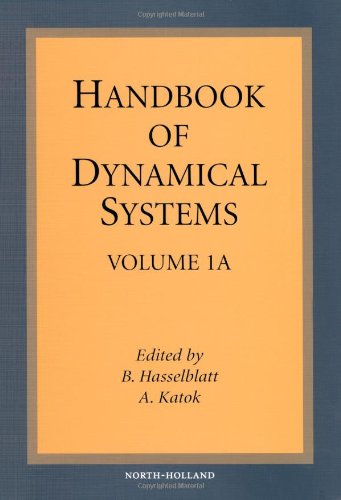
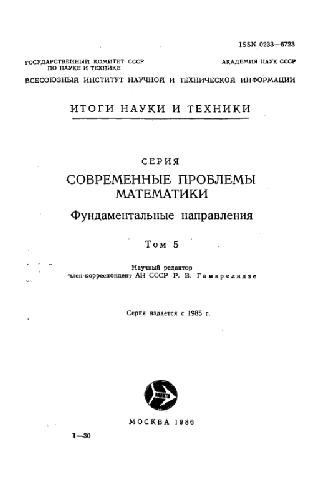

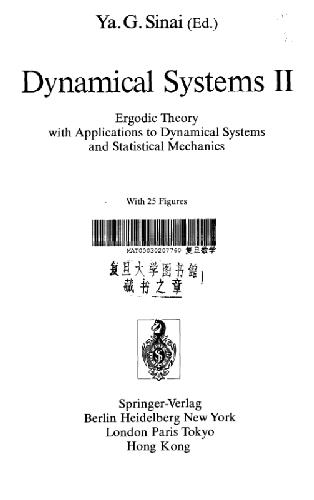
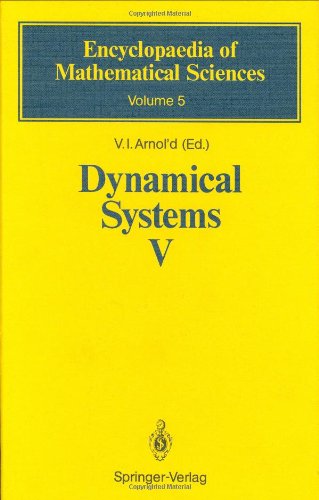

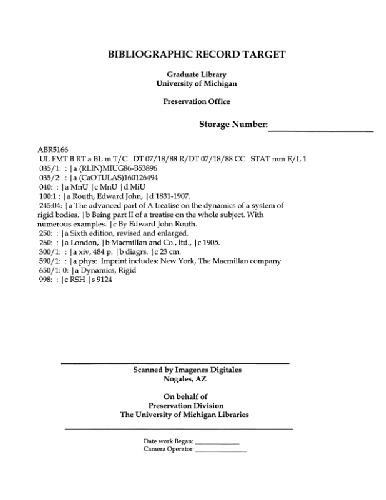
Reviews
There are no reviews yet.